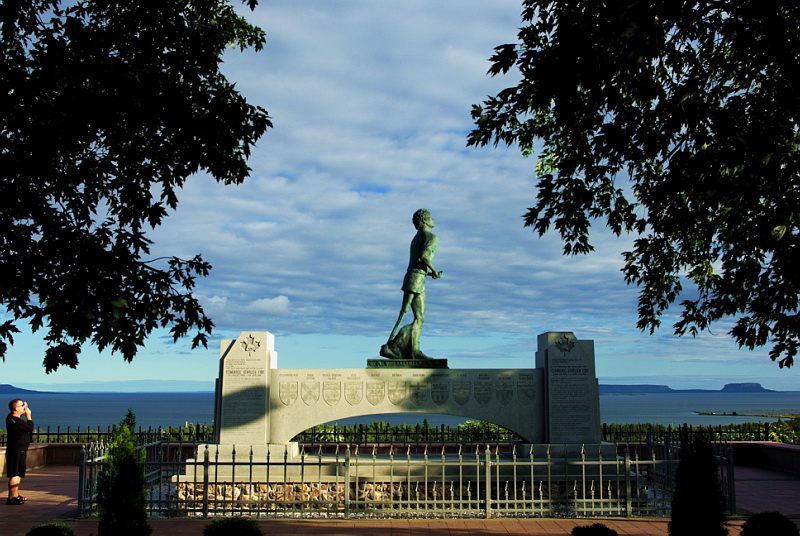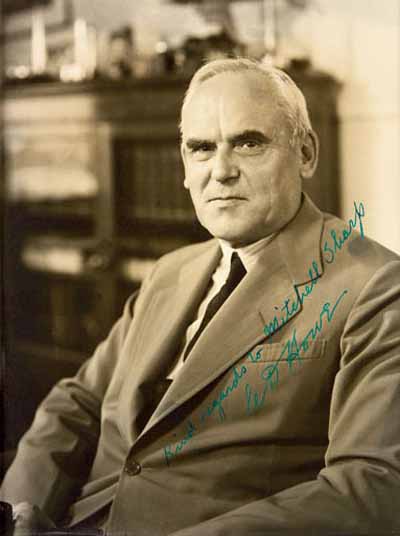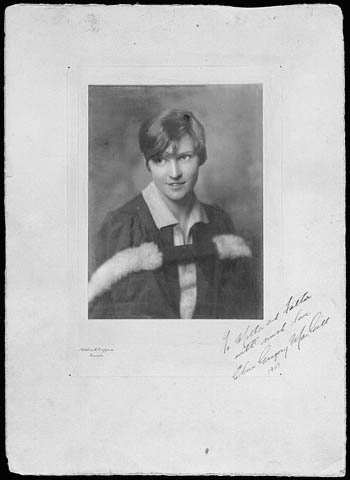HHS-Canadian Visionaries (Visionnaires canadiens) Multi-cache
HHS-Canadian Visionaries (Visionnaires canadiens)
-
Difficulty:
-

-
Terrain:
-

Size:  (small)
(small)
Please note Use of geocaching.com services is subject to the terms and conditions
in our disclaimer.
ENGLISH // FRANÇAIS
The Heritage Hide’n’Seek Geocache Series isn’t your typical history or geography lesson. Get ready to explore Northern Ontario and discover how its people, places and events shaped the Canada we know today. Find the caches, answer the questions, collect at least 100 points, and you’ll be eligible for a collectible Heritage Hide‘n’Seek geocoin.
Send your completed passport to:
Parks Canada—Geocache Series, 201 – 201 May Street North, Thunder Bay, Ontario, P7C 3P4
Bring your own pencil, as each cache is only large enough to contain a logbook (No trade items, please).
All geocaches are accessible directly from trails or public areas.
Cache may not be accessible in winter.
This cache is worth 30 points.
You will require a vehicle to complete this multi-cache. Discover three visionaries honoured within Thunder Bay. Your first stop is the Terry Fox Monument. This iconic Canadian embarked on a cross-Canada run to raise money for cancer. He ran nearly a marathon a day for 143 straight days. Remarkably, Terry did this after he lost a leg to cancer.
In 1980, Terry began his Marathon of Hope with little fanfare in St. John’s, Newfoundland. His goal was to raise 24 million dollars, one dollar for each Canadian at the time. By the time his run came to an end his determination had united the nation. He was the youngest person to receive the Order of Canada. The cancer returned, and Terry was forced to stop running in the community of Shuniah, just east of the monument. Today, the annual Terry Fox Run is the world's largest one-day fundraiser for cancer research, with over $500 million raised to date.

Terry Fox monument outside Thunder Bay (© Wikimedia Commons)
N 4_° 26.27_ W _9° _2.751
Using the Terry Fox plaque and the following clues, find out about C. D. Howe—our next visionary.
| First blank: |
Last digit of the year Terry was born |
| Second blank: |
First digit of total kilometers Terry ran |
| Third blank: |
Third digit of the year Marathon of Hope began |
| Fourth blank: |
First digit of number of days Terry ran his Marathon of Hope |
Your next stop is dedicated to the “Minister of Everything”. You’ll enjoy another of Thunder Bay’s scenic outdoor locations.
Clarence Decatur Howe was a Canadian Cabinet Minister. From 1935 to 1957, he held seven different portfolios. He is credited with moving the Canadian economy from farming to industry. He was a professor and engineer, and helped found the Canadian Broadcasting Corporation (CBC) and Trans-Canada Air Line (now Air Canada).
During World War II, he enlisted numerous corporate executives to serve in wartime endeavors. He was a man who liked to get things done, often placing priority on progress over policy. His achievements still shine today—whether it is the reconstruction of the Canadian National Railway, the establishment of the St. Lawrence Seaway, or the development of Canada's nuclear industry.

Portrait of Clarence Decatur Howe, (© National Film Board, Library and Archives Canada, R4515-27, e006608783)
Using the C.D. Howe plaque and the following clues, decipher the coordinates for our final visionary—Elsie MacGill.
N 4_° 21.4_4 W8_° _8.051
| First blank: |
Third digit of year C.D. Howe was born |
| Second blank: |
Last digit of year he was first elected |
| Third blank: |
Second digit of year he immigrated to Canada |
| Fourth blank: |
Third digit of year he established an engineering firm |
Finally, celebrate the contributions of Elizabeth Muriel Gregory “Elsie” MacGill, the world’s first woman to design an aircraft.
Elsie overcame polio to be the first woman to earn a graduate degree in aeronautical engineering in 1929. She worked at Canadian Car and Foundry (a national historic site at the same location) from 1938 to 1943, introducing mass-production techniques for the Hawker Hurricane and becoming the first woman to design a plane, the Maple Leaf Trainer II. Elsie flew as an observer in all test flights to evaluate the capabilities and flight characteristics of the aircraft. Can-Car’s aircraft production during the Second World War helped establish Thunder Bay’s international airport.
MacGill paved the way for women to enter the engineering profession. In later years, she advocated for women’s equality as a member of the Royal Commission on the Status of Women. In 1971, she was named to the Order of Canada for her contributions to the Women’s Rights Movement in Canada.

Graduation Portrait of Elizabeth Muriel Gregory “Elsie” MacGill, c. 1927 (© Library and Archives Canada, A200745)
FRANÇAIS
Le Cache-cache patrimoine série de géocaches est complètement différent d’un cours d’histoire ou géographie traditionnel. Préparez-vous à explorer le Nord de l’Ontario et à découvrir comment cette région a façonné le Canada que nous connaissons aujourd’hui. Trouvez les caches, répondez aux questions, obtenez au moins 100 points et vous pourriez vous mériter une géopièce du Cache-cache patrimoine à collectionner.
Envoyez votre passeport rempli à l’adresse suivante :
Parcs Canada – Série de géocaches, 201, rue May Nord, bureau 201, Thunder Bay (Ontario) P7C 3P4
Apportez votre propre crayon, car les caches peuvent uniquement contenir un registre (aucun article à échanger, s’il vous plaît).
Toutes les géocaches sont accessibles directement à partir des sentiers ou des aires publiques.
Les caches pourraient ne pas être accessibles en hiver.
Cette cache vaut 30 points.
Vous aurez besoin d’un véhicule pour réaliser cette multicache. Découvrez trois visionnaires honorés à Thunder Bay. Votre premier arrêt se fait au monument Terry Fox. Ce célèbre Canadien a entrepris de traverser le Canada pour amasser des fonds pour le cancer. Il a pratiquement couru un marathon par jour pendant 143 jours consécutifs. Fait encore plus remarquable, il a entrepris cette croisade après avoir perdu une jambe en raison du cancer.
En 1980, Terry Fox entreprend son Marathon de l’Espoir discrètement à St. John’s, Terre-Neuve. Son objectif est d’amasser 24 millions de dollars, soit un dollar par Canadien à l’époque. Au moment d’arrêter sa course, sa détermination a unifié toute la nation. Il est la plus jeune personne à recevoir l’Ordre du Canada. Le cancer frappe de nouveau, et Terry Fox est forcé d’abandonner son marathon à Shuniah, tout juste à l’est du monument. De nos jours, La course annuelle Terry Fox est la plus importante campagne de financement au monde pour la recherche sur le cancer; elle a permis d’amasser plus de 500 millions de dollars jusqu’à maintenant.

Monument Terry Fox à l’extérieur de Thunder Bay (© Wikimedia Commons)
N 4_° 26.27_ W _9° _2.751
À l’aide de la plaque sur Terry Fox et des indices suivants, trouvez les coordonnées de la cache portant sur le prochain visionnaire : C. D. Howe.
| Premier blanc : |
Dernier chiffre de l’année de naissance de Terry Fox |
| Deuxième blanc : |
Premier chiffre du nombre total de kilomètres parcourus par Terry Fox |
| Troisième blanc : |
Troisième chiffre de l’année où le Marathon de l’Espoir a commencé |
| Quatrième blanc : |
Premier chiffre du nombre de jours que Terry Fox a couru le Marathon de l’Espoir |
Votre prochain arrêt est dédié au « ministre de tout ». Vous pourrez admirer un autre paysage de Thunder Bay.
Clarence Decatur Howe était ministre canadien. De 1935 à 1957, il a occupé différents postes. On lui attribue le passage du Canada d’une économie fondée sur l’agriculture à une économie fondée sur l’industrie. Il a été professeur et ingénieur, et a contribué à la fondation de la Société Radio-Canada (SRC) et des Lignes aériennes Trans Canada (aujourd’hui Air Canada).
Durant la Seconde Guerre mondiale, il recrute de nombreux cadres d’entreprises pour servir en temps de guerre. Il était un homme d’action et favorisait souvent le progrès au profit des politiques. Ses réalisations sont encore bien présentes aujourd’hui, qu’il s’agisse de la reconstruction du chemin de fer du Canadien National, de l’établissement de la voie maritime du Saint Laurent ou de la création de l’industrie nucléaire canadienne.

Portrait de Clarence Decatur Howe (© Office National du Film du Canada, Bibliothèque et Archives Canada, R4515-27, e006608783)
À l’aide de la plaque sur C. D. Howe et des indices ci dessous, trouvez les coordonnées qui vous mèneront à notre dernier visionnaire : Elsie MacGill.
N 4_° 21.4_4 W8_° _8.051
| Premier blanc : |
Troisième chiffre de l’année où C. D. Howe est né |
| Deuxième blanc : |
Dernier chiffre de l’année où il a été élu pour la première fois |
| Troisième blanc : |
Deuxième chiffre de l’année où il a immigré au Canada |
| Quatrième blanc : |
Troisième chiffre de l’année où il a fondé une firme d’ingénierie |
Enfin, soulignons la contribution d’Elizabeth Muriel Gregory « Elsi » MacGill, la première femme à concevoir un avion.
Elsie MacGill a vaincu la polio et a été la première femme à obtenir un diplôme en génie aéronautique en 1929. De 1938 à 1943, elle travaille à la Canadian Car and Foundry (un lieu historique national situé à l’endroit où se trouvait l’entreprise). Elle y a fait connaître les techniques de production de masse pour la construction du Hawker Hurricane et elle devient la première femme à concevoir un avion, le Maple Leaf Trainer II. Elsie MacGill agit en tant qu’observatrice dans tous les vols d’essai pour évaluer les capacités et les caractéristiques de vol de l’avion. La production d’avions de Canadian Car durant la Seconde Guerre mondiale contribue à l’établissement de l’aéroport international de Thunder Bay.
Elsie MacGill a ouvert aux femmes les portes des professions en génie. Vers la fin de sa vie, elle milite pour l’égalité des femmes au sein de la Commission royale d’enquête sur la situation de la femme. En 1971, elle reçoit l’Ordre du Canada pour sa contribution au mouvement de défense des droits des femmes au Canada.

Photo de graduation d’Elizabeth Muriel Gregory « Elsie » MacGill, vers 1927 (© Bibliothèque et Archives Canada, A200745)
Additional Hints
(Decrypt)
Gurfr ivfvbanevrf “ebpx”